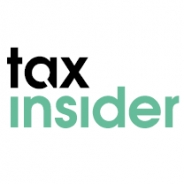
Written by Jennifer Adams for Tax Insider.
One of the most valuable of all tax reliefs is the Principal Private Residence relief (PPR) which exempts any gain made on sale of a main or principal private residence for capital gains tax (CGT) purposes.
However, there are some situations in which full PPR may not be available e.g on the sale of a property that has been used as part main residence and part business or for business use for part of the time of ownership and part not.
In such instances a claim for Entrepreneur Relief (ER) should be considered.
ER charges the gain on the sale of a business or business asset at a more favourable tax rate of 10% than the usual CGT residential property tax rate of 18% or 28% but in order to qualify there needs to be a ‘material disposal’ of 'business assets' by an individual (TCGA 1992 s 169I).
‘Material disposal’ is a disposal of either the whole or the major part of the business which must have been owned by the individual making the disposal throughout a period of two years up to the date of the disposal.
‘Business assets’ are defined as being the entire or identifiable part of a business or of one or more assets in use in the business at the date of cessation.
In a situation where these two conditions are satisfied but where the 'asset' is a main residence then the question as to how much of the gain is exempt under PPR and how much is CGT chargeable needs to be calculated. Where either part has been used exclusively for business (e.g. a workshop from which a business has been run attached to the PPR) or part has been let (e.g. an 'annex' rented as a furnished holiday let or a 'bed and breakfast' business) then the chargeable gain is calculated by splitting the gain between the business part or the let part (which is CGT chargeable and as such can attract ER assuming the 'two years' condition is satisfied) and the main area of living accommodation, which is PPR exempt.
Should the property have been let in full as a furnished holiday let and then the letting ceased because the owner wishes to use the property as his/her PPR, then on a subsequent sale because it is a material disposal, there is no apportionment, so the part of the gain that remains a chargeable gain after allowing for PPR qualifies for ER. In this situation the gain is calculated and the PPR relief period is deducted first and then ER is claimed on the whole of the gain remaining.
Want more property tax saving tips? Start a free trial to our monthly tax saving newsletter.



Please register or log in to add comments.
There are not comments added